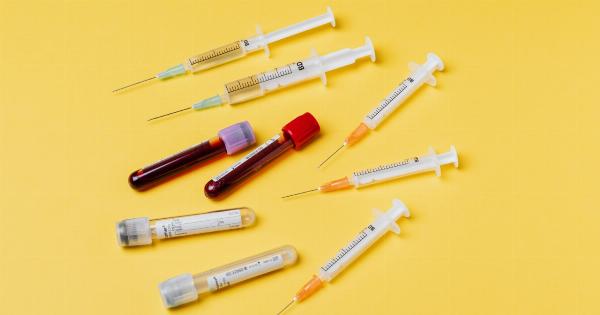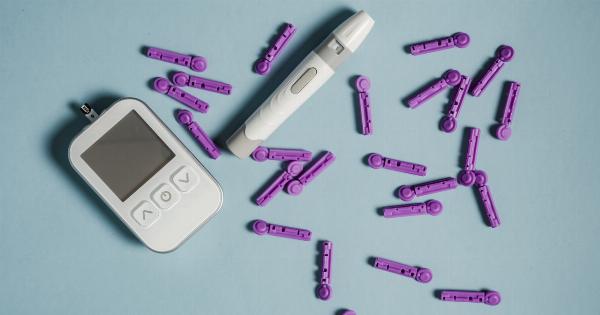Blood transfusion is a life-saving procedure that involves transferring blood or blood components from one person to another. The blood used in transfusions is typically obtained from donors and stored in blood banks or medical facilities.
While fresh blood is commonly preferred for transfusions, there is a growing interest in utilizing old blood due to its unique characteristics and potential benefits. In this article, we will explore the concept of optimal quality old blood for transfusion, including its definition, storage methods, potential advantages, and considerations.
Definition of Optimal Quality Old Blood
Optimal quality old blood refers to blood that has been stored for an extended period, typically beyond the recommended shelf life of fresh blood. Fresh blood is typically defined as blood that has been collected within the last 42 days.
Old blood, on the other hand, encompasses blood that has been stored for more than this timeframe. While there is no universally agreed-upon definition for how long blood must be stored to be considered “old,” it is generally understood to be blood that has exceeded the recommended shelf life.
Storage Methods for Old Blood
The storage of old blood requires careful consideration to maintain its quality and safety for transfusion. Blood banks and medical facilities follow specific procedures to ensure optimal storage conditions. These methods include:.
1. Refrigeration
Old blood is usually stored in refrigerated conditions to slow down the degradation process. Refrigeration helps preserve the components of blood, such as red blood cells, white blood cells, and platelets, for a longer period.
The temperature is typically maintained between 2 to 6 degrees Celsius to prevent bacterial growth and maintain cellular viability.
2. Anticoagulants and Preservatives
To prevent blood from clotting during storage, anticoagulants such as citrate phosphate dextrose (CPD) or citrate phosphate dextrose adenine (CPDA-1) are commonly added during the collection process.
These anticoagulants help maintain the fluidity and usability of the blood components. Additionally, preservatives like adenine or mannitol are added to provide nutrients and stabilize red blood cells during storage.
3. Freezing
In certain cases, old blood may be frozen to extend its storage life further. Freezing blood allows it to be stored for an extended period, often up to ten years or more.
Cryopreservation techniques involve adding cryoprotective agents to the blood before freezing it at very low temperatures, usually below -80 degrees Celsius.
The Potential Advantages of Old Blood for Transfusion
While fresh blood is commonly used for transfusions, there is growing research and interest in utilizing old blood for various reasons:.
1. Increased Availability
Utilizing old blood for transfusions could potentially help overcome blood shortages by making use of stored blood that would otherwise go unused.
This increased availability can be particularly valuable during times of high demand, emergency situations, or in remote areas where fresh blood may not be readily available.
2. Unique Immunomodulatory Effects
Research suggests that old blood may have unique immunomodulatory effects compared to fresh blood.
It is believed that certain biological changes occurring during storage can stimulate anti-inflammatory pathways, potentially reducing the risk of adverse immune reactions in recipients.
3. Cost-Effectiveness
Old blood, especially when compared to the costs associated with continuously collecting and storing fresh blood, may offer a more cost-effective solution.
By utilizing stored blood, medical facilities can reduce the expenses associated with regular blood collection, testing, and storage.
Considerations for Transfusion of Old Blood
While utilizing old blood for transfusions offers potential benefits, several considerations must be taken into account:.
1. Quality and Cell Viability
Over time, blood cells stored in old blood may undergo changes that affect their functionality and viability.
It is essential to assess the quality and viability of the blood components before transfusion to ensure their ability to carry oxygen, fight infections, and perform other essential functions.
2. Risk of Infection
Even with appropriate storage methods, there is always a risk of bacterial contamination and infection associated with blood transfusions. Strict screening and testing procedures should be followed to minimize this risk.
3. Individual Patient Considerations
Each patient’s specific needs and medical condition must be considered when deciding whether to use old blood for transfusion.
Factors such as age, underlying health conditions, and the urgency of transfusion play a role in determining the suitability of utilizing old blood.
Conclusion
Optimal quality old blood for transfusion offers potential benefits in terms of increased availability, unique immunomodulatory effects, and cost-effectiveness.
While careful storage methods are employed to preserve old blood, considerations regarding quality, the risk of infection, and individual patient needs must be taken into account. Ongoing research and advancements in blood storage techniques are essential to further explore the potential advantages and ensure the safe and effective utilization of old blood in transfusion practices.



























